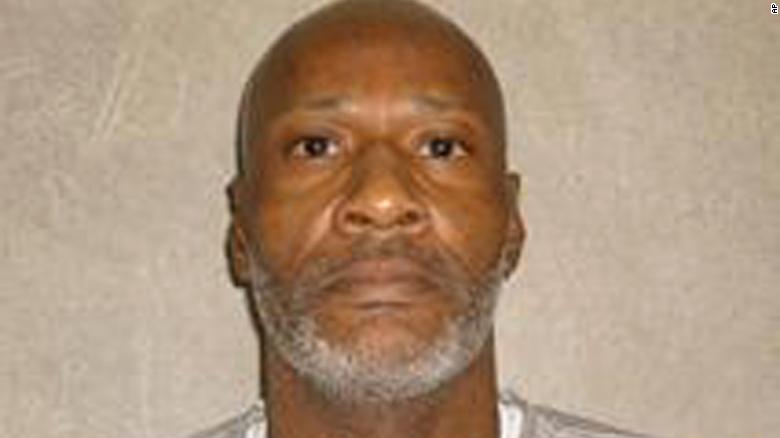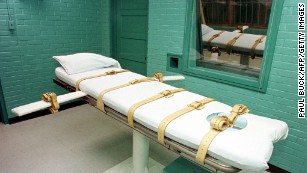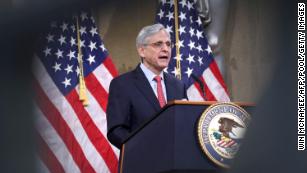Jordan Green, Staff Reporter
October 28, 2021
RAW STORY

Booking photo for Christopher Cantwell
Lawyers representing multiple white nationalists on Thursday rushed to distance their clients from a legal strategy being pursued by fellow white nationalist Christopher Cantwell.
During opening statements at the Charlottesville civil lawsuit trial, attorney James Kolenich, who represents white nationalist Jason Kessler and Identity Evropa founder Nathan Damigo, pursued a cautious strategy in his opening statement to the jury today by saying there simply is no evidence to connect the deadly 2017 car attack carried out by Ohio man James Fields with the other defendants' efforts to organize the rally.
"A conspiracy is an agreement," Kolenich said. "If you agree to yell at people, to annoy them, how is that an agreement to hit them with a car? If you spit at people, how is that an agreement to kill them?"
"There is a giant chasm in the plaintiffs' argument that anything you find that Kessler and Damigo agreed to that day that happened resulted in injuries for these defendants," he added.
In his opening statement on behalf of Fields, who in 2019 pleaded guilty to 29 counts in violation of the federal hate crimes law, attorney David Campbell said "there's no question" that his client "committed racially motivated violence."
But he suggested there is little to connect Fields to the other codefendants, who played a role in organizing and promoting the rally.
"I don't believe, despite a mountain of evidence that you will see any communication, any email, any agreement between Fields and any codefendant. I don't believe you will see any evidence that any of the codefendants knew James Fields before August 12th, 2017."
Richard Spencer and Christopher Cantwell, the two defendants who are representing themselves, suggested to the jury, as the plaintiffs' counsel predicted they would, that the trove of damaging communications from the Discord messaging platform was hyperbole and not evidence of a conspiracy.
Responding to a recording the plaintiffs played for the jury in which the normally polished Spencer raged that "those pieces of shit are going to be ruled by people like me…. we are going to destroy this f***ing town," Spencer dismissed it as "tough talk."
Cantwell described himself to the jury as a "professional entertainer," admitting to the jury that he tweeted at a Black man who challenged him on Twitter: "Shut up, n***er."
"The show is marketed as fiction, because it prioritizes entertainment over accuracy," Cantwell said, describing the podcast that earned him notoriety. "I'm an artist."
In an unhinged rant, Cantwell promised that his body-worn camera video that recorded a two-and-a-half-hour "leadership meeting" before the violent Aug. 11 torch march at the University of Virginia would absolve him of wrongdoing.
He went on to say: "You'll hear a couple racist jokes; we're kind of notorious for that…. You'll hear a brief mention of running people down in a vehicle and getting in a gun fight. But what you won't hear is a conspiracy."
Cantwell signaled to the jury that he will employ a starkly different strategy from his codefendants, who attempted to convey sympathy for the victims. In contrast, Cantwell criticized plaintiff the Rev. Seth Wispelwey, accusing him of blocking a roadway, and peppered his opening statement with derisive commentary about Antifa and Black Lives Matter.
In the runup to the trial, Cantwell has continued to promote a discredited conspiracy theory in an attempt to shift blame for the violence onto antifascist counter-protesters. In a handwritten brief filed three days before the start of the trial, he claimed that "the defendants were the victims, not the perpetrators, of the planned criminal conspiracy."
Kolenich, the lawyer for Kessler and Damigo, took pains to distinguish his clients from Cantwell in his opening statement.
"At no time are we going to claim the plaintiffs are Antifa," he said. "They're innocent people who were caught in between the alt-right and Antifa."
Spencer has also signaled that he will not join Cantwell in attempting to deflect blame onto "Antifa."
During jury selection earlier this week, when Judge Norman K. Moon invited counsel to offer evidence that the plaintiffs were linked to Antifa, Spencer said, "I will not argue that."
Josh Smith, who is representing Matthew Heimbach and David Matthew Parrott of Traditionalist Worker Party, previewed a somewhat different argument. Smith, who is ideologically aligned with his clients, revived a conspiracy theory generated by white supremacists in the immediate aftermath of Unite the Right that Fields' car attack was somehow engineered by law enforcement and city government.
Smith told the jury that the "alt-right and the far right were defamed" by publicity surrounding Fields' car attack, describing it as being "like a movie trope."
"Here, what we have is one of those situations where legally permitted rally-goers are not able to access the park and fighting breaks out," Smith said. "Police allow fighting to continue so they can step in and shut the rally down... This is why it's such a failure of local and city government. Why didn't you just keep the two different groups separate?"
Smith and other defense counsel have unsuccessfully attempted to cite an independent review of the violence that took place in Charlottesville in 2017 into evidence. The report authored by former US Attorney Timothy Heaphy was sharply critical of law enforcement handling of Unite the Right. But Judge Moon ruled the report is inadmissible as hearsay evidence.
William Edward ReBrook IV, representing former National Socialist Movement commander Jeff Schoep, told the jury he was "disgusted" by what he saw in the video presented earlier in the day by the plaintiffs depicting white nationalists marching on the Rotunda at the University of Virginia and Fields' car attack. He added that he wouldn't bother trying to humanize Schoep and the National Socialist Movement, whom he described "the most nefarious and notorious defendants other than James Fields."
"It would be a waste of time to humanize someone who holds repugnant views that most of us would give our dying breath to oppose."
ReBrook, who was out of court for two days with an unspecified illness, instead argued that the First Amendment is at stake.
Defense counsel Roberta Kaplan interjected a protest when ReBrook urged the jurors to "not allow attorneys from another state, from New York, to come down here and whittle away at the First Amendment."
Other members of the defense team have previously attempted to make Kaplan's Jewish identity an issue in the trial.
"The lawyers are not on trial," the judge admonished ReBrook.
Attorneys vow to prove neo-Nazis 'planned for violence' during start of Charlottesville trial
Jordan Green, Staff Reporter
October 28, 2021

Kim Kelley-Wagner on Shutterstock.
Lawyers for nine people injured in the 2017 Unite the Right rally laid out their case in federal courtroom in Charlottesville that organizers of the violent white nationalist gathering conspired to commit racially motivated violence.
"They are going to tell their stories directly to you because they believe the truth about what happened in Charlottesville must be told," Karen Dunn, one of the lead attorneys, told the 12 jurors. "These plaintiffs will tell you this is a case about justice and accountability — accountability for these defendants who planned and perpetrated violence thinking they would always get away with it."
In a riveting 90-minute opening statement that included video footage, audio recordings, Dunn and fellow lead attorney Roberta Kaplan presented a searing diorama of a white nationalist movement in 2017 bristling with violence in text messages exchanged by leaders and escalated into eliminationist lust as they hurtled towards the appointed date of Aug. 11 and 12 in Charlottesville.
They told the jurors about the defendants — locals that included a pastor, a landscaper and students at the University of Virginia — who took a nonviolent stand against white supremacy and were subjected to ghastly attacks, racial slurs and a car attack that left them with lasting injuries.
"We will show you that the violence on August 11th and August 12th was no accident," Dunn told the jurors. "They planned for violence. They executed violence. They celebrated and ratified the violence, after the fact. That is what we're going to prove to you."
Emphasis on prior planning, acts of violence by some of the defendants and celebratory statements by the organizers after the fact provided a common refrain in the plaintiffs' opening statement, underscoring that they need to prove that the defendants shared an unlawful objective to prove a conspiracy, even if other aspects of their activity such as publicly demonstrating to promote their white supremacist and anti-Semitic views are protected under the First Amendment.
In her portion of the opening statement, Dunn attempted to draw a tight connection between leaders like Richard Spencer and Jason Kessler, respectively the most prominent white nationalist in the country at the time and the rally's local organizer, and James Fields, an Ohio man who sped his Dodge Challenger into a peaceful antiracist march, killing Heather Heyer.
Dunn told the jury that when Kessler decided to organize Unite the Right, he reached out to three men: Spencer; Matthew Heimbach, leader of the Traditionalist Worker Party; and Elliott Kline (then known as Eli Mosley sp), an organizer with Identity Evropa. Kline, who helped organize the rally alongside Kessler, reached out the Vanguard America, another neo-Nazi group.
"James Fields has admitted he was inspired by Richard Spencer to go to Charlottesville," Dunn said. "He marched with Vanguard America. He was wearing the Vanguard America uniform. He carried a Vanguard America shield. Dillon Hopper was the leader of Vanguard America and had communications with Kline. Thomas Rousseau also had communications with Kline and took control of Vanguard America just before August 12th. He led the soldiers on the ground."
Neither Hopper nor Rousseau are defendants, although the defunct Vanguard America is.
Previewing the plaintiffs' case that the defendants used the First Amendment as a ruse to cover for racist violence, Dunn quoted from a text message Kessler sent in response to Spencer's confirmation that he would speak at Unite the Right: "We're raising an army, my liege, for free speech, but the cracking of skulls if it comes to it."
Dunn also previewed testimony from Samantha Froehlich, who is the former girlfriend of Elliott Kline.
"Mr. Kline was actually working for an exterminator, as unbelievable as that sounds," Dunn said. "Samantha Froelich, she will testify that Mr. Kline wanted to kill Jews instead of cockroaches. He would say, 'Gas the kikes forever.'"
Dunn cited messages exchanged among the defendants and co-conspirators discussing using sticks and shields as weapons, and celebrating weaponizing cars, including a message by defendant Matthew Heimbach with the hashtag #HitTheGas.
"While watching someone run over counter-protesters may seem shocking to most of us, you will come to see it was reasonably foreseeable that a car would run over counter-protesters," Dunn said.
Jordan Green covers right-wing extremism for Raw Story. A Kentucky native, he now lives in North Carolina, where he spent 16 years writing for alt-weeklies and freelancing for the Washington Post and other publications.
October 29, 2021

Neo-Nazi Christopher Cantwell (Vice.com/Screenshot)
The organizers of the "Unite the Right" rally that drew hundreds of white supremacists to Virginia used racial slurs and clowned around during opening statements in their trial.
The civil rights group Integrity First for America brought a lawsuit against the rally organizers under the Ku Klux Klan Act of 1871, which allows victims of racially motivated violence to sue conspirators who harmed them, and the organization's legal team argued that rally organizers carried out a plot to bring violent right-wing extremists to Charlottesville, reported BuzzFeed News.
"They wore riot gear, they marched in formation, they carried shields that were later used to break through the counterprotesters, and they carried flags that were later used as weapons," attorney Karen Dunn told jurors. "This case is a case about violence and intimidation that was planned for months and culminated in a tragic and violent weekend on Aug. 11 and 12 of 2017, right here in Charlottesville, Virginia."
On the other hand, Christopher Cantwell, the right-wing shock jock known as the "crying Nazi," used his opening statement to promote his radio program, mention Mein Kampf, utter the N-word and blast Antifa activists.
"You'll hear us making a couple racist jokes, we're sort of notorious for those things," Cantwell said. "But what you won't hear is a conspiracy to commit any crime, much less a violent one."
"I'm not a lawyer … [but] I'm the best attorney I could afford," Cantwell added, "and I didn't even stay at a Holiday Inn Express last night."
White nationalist Richard Spencer, who has seen his profile drop since getting sucker-punched on video after Donald Trump's inauguration, also represented himself, saying the lawsuit had already "financially crippled" him and insisted that he did not initiate the deadly violence or communicate often with his two-dozen co-defendants.













